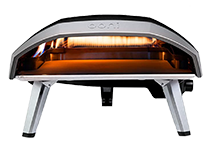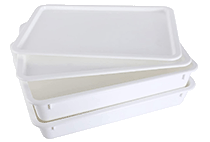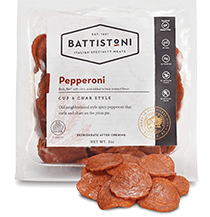If you have ever worked in a pizzeria, then you are familiar with dough-proofing boxes. Busy pizzerias will have stacks of dough-proofing boxes so they are constantly ready to meet customer demand and have fresh pizza ready to go.
And we personally use the best pizza dough proofing box in our home kitchen, usually preparing 4-6 dough balls at a time. It’s advantage to use these right in our fridge! Don’t sleep on this homemade pizza accessory and check out our three recommendations.
Key Takeaways:
- Using a dough proofing box creates the ideal warm, humid environment for pizza dough to rise properly. It allows the yeast to activate and the dough to double in size for light, airy pizza crust.
- A dough proofing box contains the rising dough so it doesn’t dry out or get contaminated. It also makes it easy to proof multiple dough balls at once. This ensures consistency in texture and quality between batches.
- For home use, look for an airtight plastic or silicone proofing box that can hold 4-6 dough balls and fits in the refrigerator. Recommended options include the Lymn, GSM, and KevJes silicone boxes that provide enough space for rising while being easy to use and clean.
Table of Contents

But if you are home pizzaiolo, you might be wondering if you really need a dough-proofing box. After all, you have all of the other pizza accessories like a pizza peel, pizza stone, pizza cutter, and pizza oven.
Should you get a dough-proofing box for home? And what is the best dough-proofing box for home use? You already know how long a pizza stone stays hot, but how long will dough last?
If you are serious about making pizza, then a dough-proofing box makes sense. But before we explore why you should invest in a dough-proofing box, let’s look at exactly what it is and how to use it.
What is a Pizza Dough Proofing Box?
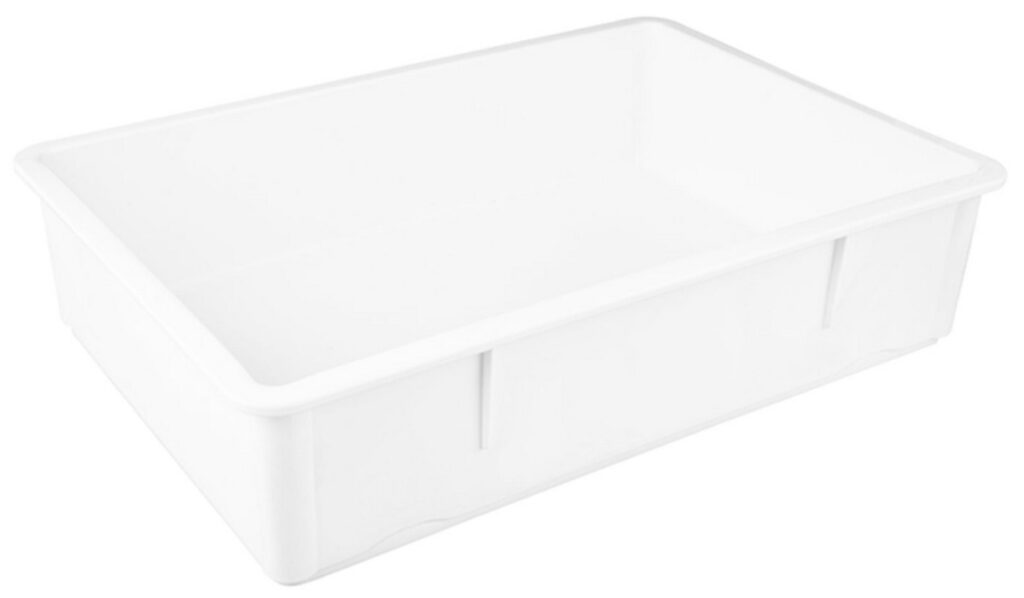
Dough-proofing boxes are a place for pizza dough to rise. Whether you call it proofing or fermentation, the process is the same. The dough is placed in a dough-proofing box to provide the ideal environment for yeast to ferment, making the dough rise.
A dough-proofing box creates a warm, humid environment to allow the yeast to activate and produce more carbon dioxide and resulting in a rise. Yeasted dough, like pizza dough, will double in size, yielding a light dough.
Dough proofing boxes are airtight containers that let you proof your pizza or bread dough in a controlled environment. Letting your dough rise in a proofing box ensures that it won’t dry out or get debris in the dough. Plus, the dough won’t stick to the box, making the dough balls easy to take out.
Pizzerias usually have rectangular dough boxes that fit twelve dough balls per tray and come with a lid. Many pizzerias do a cold ferment which means they let the dough rise for roughly 24 hours in the refrigerator. These boxes keep the dough from interacting with other refrigerator smells, and they stack nicely to save space.
If you only occasionally make pizza, you probably use a large mixing bowl and plastic wrap to cover your dough. Many home chefs do not do a lengthy 24-hour cold ferment and usually opt for quick proofing by leaving the dough out on the counter for anywhere between 4-10 hours.
If you only occasionally make pizza, then that system may work for you. But if you are like us and want to learn everything about making pizza and throw regular pizza parties for friends and family, then a dough-proofing box may be a good investment.
Benefits of Using a Dough Proofing Box

- Space to proof several doughs at once.
- Quality dough that doesn’t dry out and crack.
- Consistency dough so your pizza comes out the same every time.
Most homemade pizza dough recipes make two dough balls. And if you plan on making pizza for a large group, then you may be making four to six to even eight pizzas at a time.
Or if you are like a good friend of ours who loves to meal prep and makes several pizzas at a time and freezes individual slices for her hungry teens to heat up, then a dough-proofing box is an excellent investment.
How to Choose the Pizza Dough Proofing Box
There are several different styles of dough-proofing boxes for home use. You really don’t need a commercial dough-proofing box for twelve dough balls, as even the most avid home pizza maker probably isn’t making twelve pizzas.
But you can find ones that are more suitable for what you need to proof your pizza dough. And, of course, remember you can also make focaccia, calzones, breadsticks, and pizza pull-apart bread with the same dough.
Before buying a dough-proofing box, you should consider a few things while searching for the best dough-proofing box.
Material
Many dough-proofing boxes are made from food-safe plastic. They are affordable, easy to clean, and do the job. But you can also find silicone, aluminum, and glass dough-proofing boxes.
Originally, dough was proofed in wooden boxes, and you still see them sometimes. In the opening scene of Chef’s Table: Pizza Edition, episode 4, pizzaiolo Franco Pepe is elbow-deep in a wooden proofing box kneading his pizza dough.
There is no denying that aesthetically wooden boxes are unique and add a rustic Italian vibe to your pizza making. But depending on the type of wood, they are often difficult to control the moisture. And wooden proofing boxes are not recommended for those of us still honing our pizzaiolos skills.
But if you must have one, check out Etsy or other small artisans, as wooden dough-proofing boxes are difficult to find.
Airtight
The dough-proofing container must be airtight. This is another reason wood dough-proofing boxes aren’t the best option for amateur pizzaiolos. If air enters, it can dry out the dough, making it difficult to work with. Make sure you find good ones with snug lids.
Size
When thinking about new kitchen equipment, size does matter. Consider the size of the container and how much dough you usually make. And besides just the length and width, remember the depth matters as well. Plus, many home dough-proofing boxes are stackable, which makes them easier to fit into your refrigerator.
Best Dough Proofing Boxes for Home Use
Here are three proofing boxes that we like and fit everything we are looking for in a pizza dough proofing box.
1. Lymn Dough Proofing Box $24.99-ish
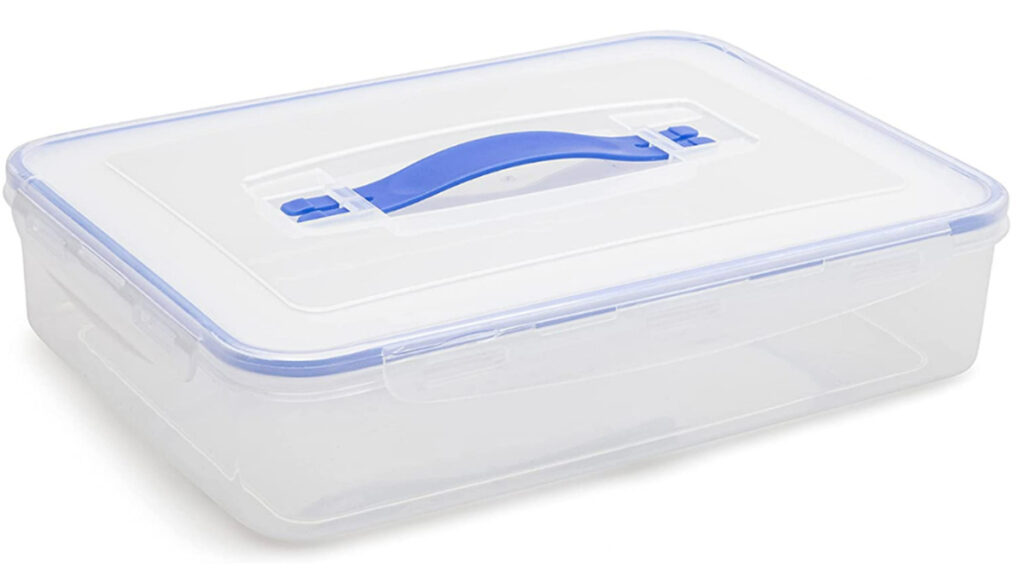
At 13″ x 9″ x 3″, it holds four to six dough balls. It’s easy to clean and store. Furthermore, it’s got a leak-proof and airtight lid with convenient little blue handle. Should easily fit on most refrigerator shelves.
2. GSM Brand Dough Proofing Boxes with Covers $49.99ish for two
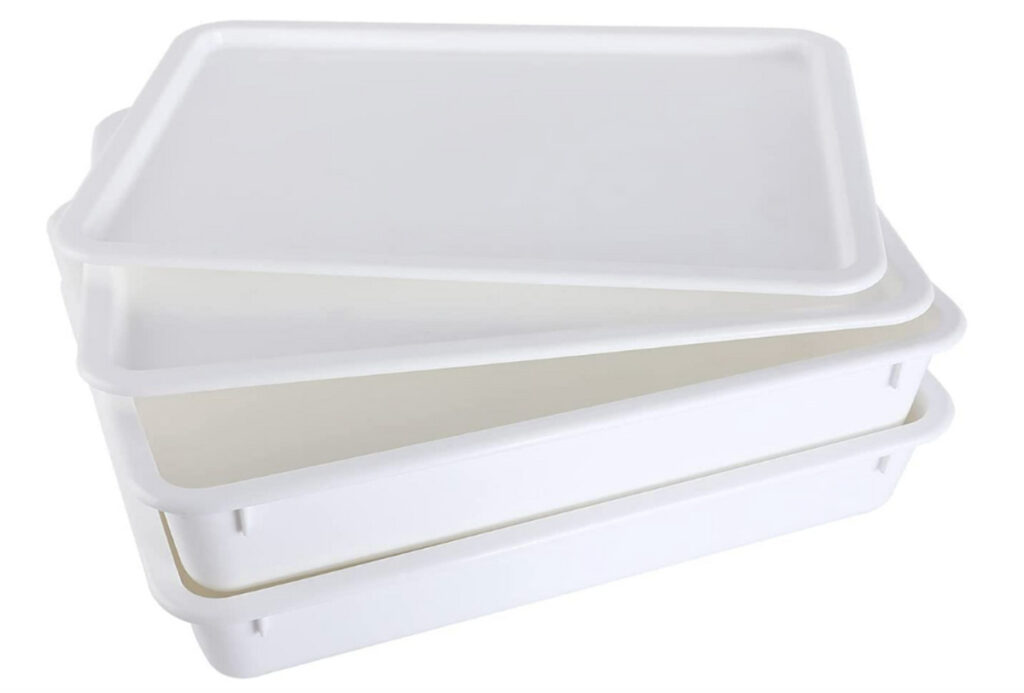
We like these ones because they hold about six doughs of equal size each and are over 3.5 inches deep, so they have more than enough room for a rise, either a cold or quick fermentation. And fits perfectly on our fridge shelf. Also, they really remind us of the ones we see in pizzerias. So authentic! Just how we like it.
3. KevJes Silicone Dough Proofing Box $24.99
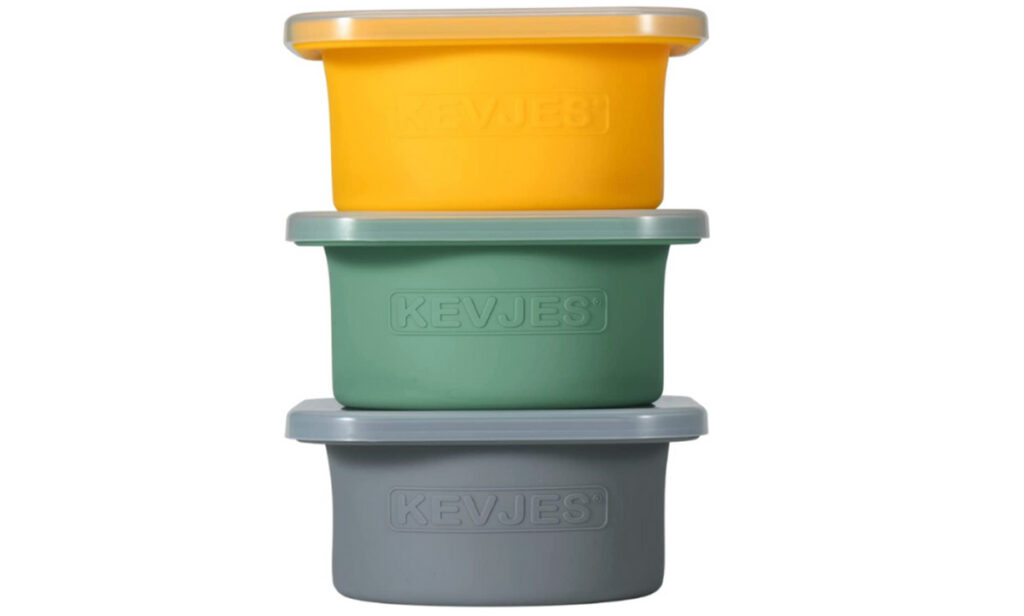
These stackable dough-proofing boxes are great for smaller pizzas.
Best Pizza Dough Proofing Box – Buying Guide Summary
| Item | Price | Description |
|---|---|---|
| Lymn Dough Proofing Box | $24.99-ish | At 13″ x 9″ x 3″, it holds four to six dough balls. It’s easy to clean and store. Furthermore, it’s got a leak-proof and airtight lid with a convenient little blue handle. Should easily fit on most refrigerator shelves. |
| Caspian Pizza Proofing Dough Box | $58.89 | We like this one because it holds about six doughs of equal size and is over six inches deep, so it has more than enough room for a rise, either a cold or quick fermentation. Also, it really reminds us of the ones we see in pizzerias. So authentic! Just how we like it. |
| KevJes Silicone Dough Proofing Box | $24.99 | These stackable dough-proofing boxes are great for smaller pizzas. |
Frequently Asked Questions
How long should dough rise in the proofing box?
Most recipes call for 2-4 hours on the counter or 8-24 hours in the refrigerator. Yeast activity and rising time can vary depending on temperature.
How do I clean a dough proofing box?
Just like cleaning pizza cutters, mild soap and warm water should suffice. For stubborn residues, a brief soak may help. Dry completely before storing to prevent mold growth.
Can I use other containers for proofing besides a box?
Yes, lightly oiled bowls covered with plastic wrap can also work. The key is creating an airtight, warm environment for even rising.
What temperature is best for proofing dough?
Around 75-80°F is ideal for room temperature rising. In the fridge, 38-40°F slows yeast for a longer cold fermentation with more flavor development.
When will I know the dough is fully proofed?
It will have increased to almost double its original size. You can also gently press two fingers into the dough – the indentation should slowly fill in.
Can I stack proofing boxes in the fridge?
Yes, most home-sized boxes are designed to stack for compact storage. Be sure lids are securely closed to prevent dough drying out.
Have you used a dough-proofing box? What is the best dough-proofing box for your kitchen?


